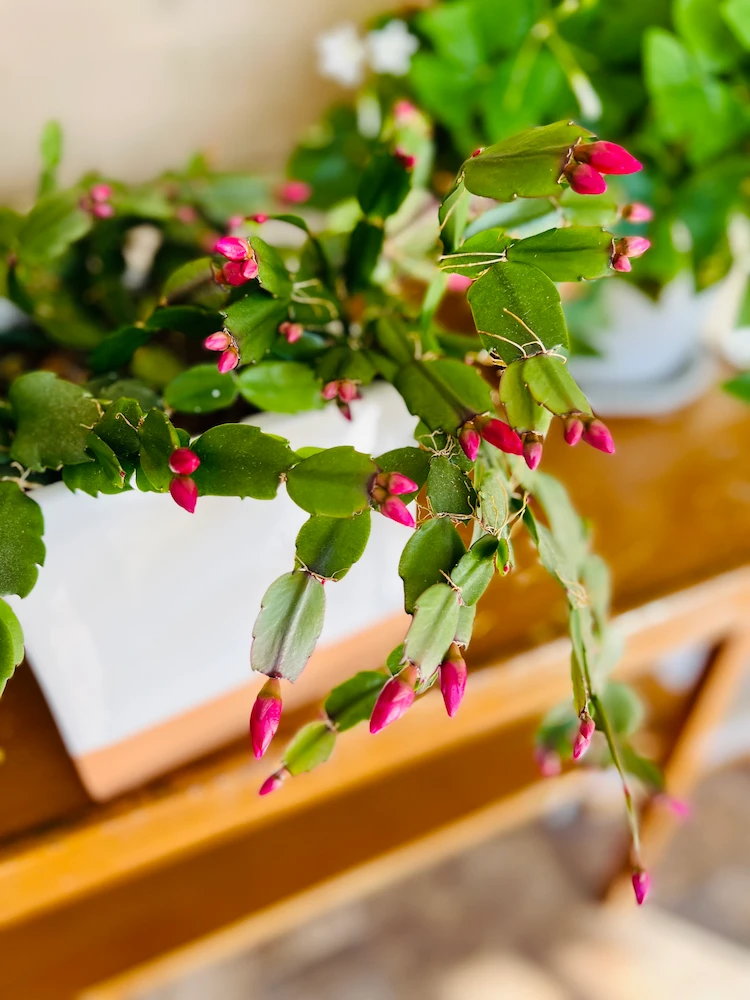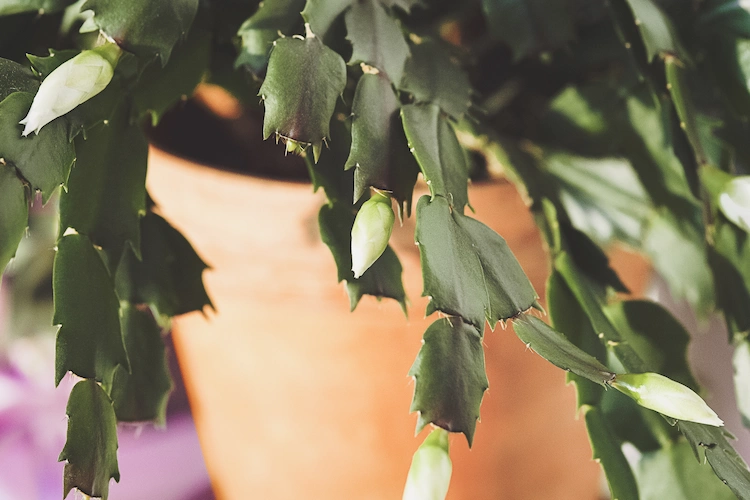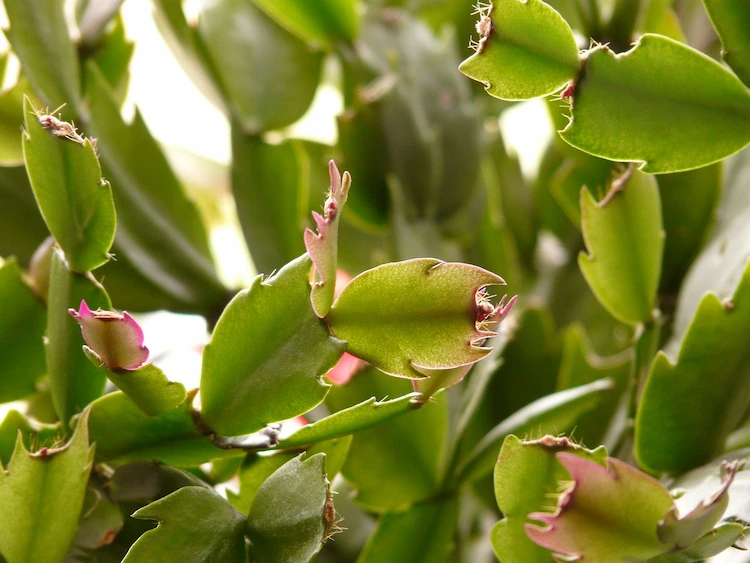Christmas is slowly approaching and there is nothing better than decorating the house with a festive houseplant. The poinsettia is not the only option for this. Although it may seem like an odd choice, the Schlumbergera, with its lush blooms, is a welcome sight in winter and is often given as a gift at Christmas time. Here is our Christmas cactus care guide that will help you so that your plant gives us beautiful flowers for years to come.
Christmas Cactus Care: This Is How It Grows Healthily and Blooms Profusely
Blooming in a variety of colors including red, orange, pink, purple and white, this colorful plant will brighten up any room during the holiday season and beyond. However, lack of water and temperature fluctuations result in the flower buds falling off. With proper care, you can maximize your specimen’s blooms and keep it living for years. Find out about the requirements of this fabulous plant, which is called a cactus but is actually a succulent native to the tropics.
What Light Requirements Does the Succulent Have?
The Christmas cactus should be placed in a bright spot. An east-facing window would be ideal. It can be exposed to full sunlight during winter flowering, but in spring and summer this can bleach the delicate leaves. Also remember that the buds need at least 13 hours of darkness to bloom and don’t forget to turn off the indoor lights at night.
Choose the Right Soil
Schlumbergera needs well-drained soil that can retain a little moisture. A mixture of cactus and succulent soil is perfect for this, but all-purpose soil is also a good choice.
If you have a new plant, just leave it in the pot; it shouldn’t be repotted for a few years. However, if repotting is necessary, choose a pot that is 0,5 to 1 inch/2 to 5 cm larger and make sure it has drainage holes.
How Often to Water?
Water your Christmas cactus only when the soil is completely dry. Water it thoroughly until the water runs through the drainage holes and pour out the excess liquid in the bowl after 10-15 minutes so that the pot does not sit in water.
Watering every 2 to 3 weeks should be enough in winter, while the plant should be watered 2-3 times a week in hot summer.
It is particularly important to check the soil regularly during the flowering period and to water the plant adequately.
Christmas Cactus Care: When Should You Fertilize It?
Monthly fertilization is required during the growing season from late winter to late summer. As the flowering succulent benefits from magnesium, you can fertilize it with Epsom salt by dissolving 1/2 teaspoon of it in 0,5 gallons/2 liters of water and watering it once a month.
Humidity and Temperature
Schlumbergera originates from the rainforests and therefore thrives best in a humid environment. Mist the plant a few times a week or place it on a pebble-filled tray of water to increase the humidity.
It thrives best in cooler temperatures between 59-68F/15-20C, so keep it away from radiators and fireplaces.
After flowering in January, it makes sense to place the Christmas cactus in a cool but humid place indoors and in summer it can thrive in the shade in the garden. However, make sure you bring it back indoors before the first frost.
Also read: How to Make Amaryllis Bloom Again for Christmas?
How Do You Get a Christmas Cactus to Bloom Again?
Christmas cacti will bloom again every year if properly cared for. If your plant isn’t blooming, it may be receiving too much light or being exposed to temperatures that are too high.
After flowering, place the plant in a cool room (59-68F/15-20C) for 2 months and reduce watering. Then return it to its usual location. In September you should give it a rest period in a cool room and water it less often until the buds form. Then put it back in its usual location in the house.
Tip: Fall fertilization with a low-nitrogen fertilizer can also encourage bud formation.
Also read: Why my Christmas cactus isn’t blooming? Does it matter whether it is outdoors or indoors?
Pests and Diseases
Christmas cacti are generally low maintenance plants, but they are not resistant to pests and diseases.
The most common pests that could attack your plant are spider mites, aphids, mealybugs and fungus gnats. You can remove these with a cotton ball soaked in alcohol or treat them with a suitable natural method.
The succulent is also susceptible to stem and root rot and fungal diseases if it is over-watered. Wilted, brown leaves, black or reddish spots on the leaves and stems, and soggy soil are signs of root rot. If you suspect this problem, remove the affected areas, transfer the Christmas cactus to clean soil and allow the roots to dry for a few days before watering.
If the plant’s leaves turn red or pink, it means it is getting too much sun or too little water.
Also read: Is Christmas cactus afraid of frost? How to care for it to make it bloom again in winter?




